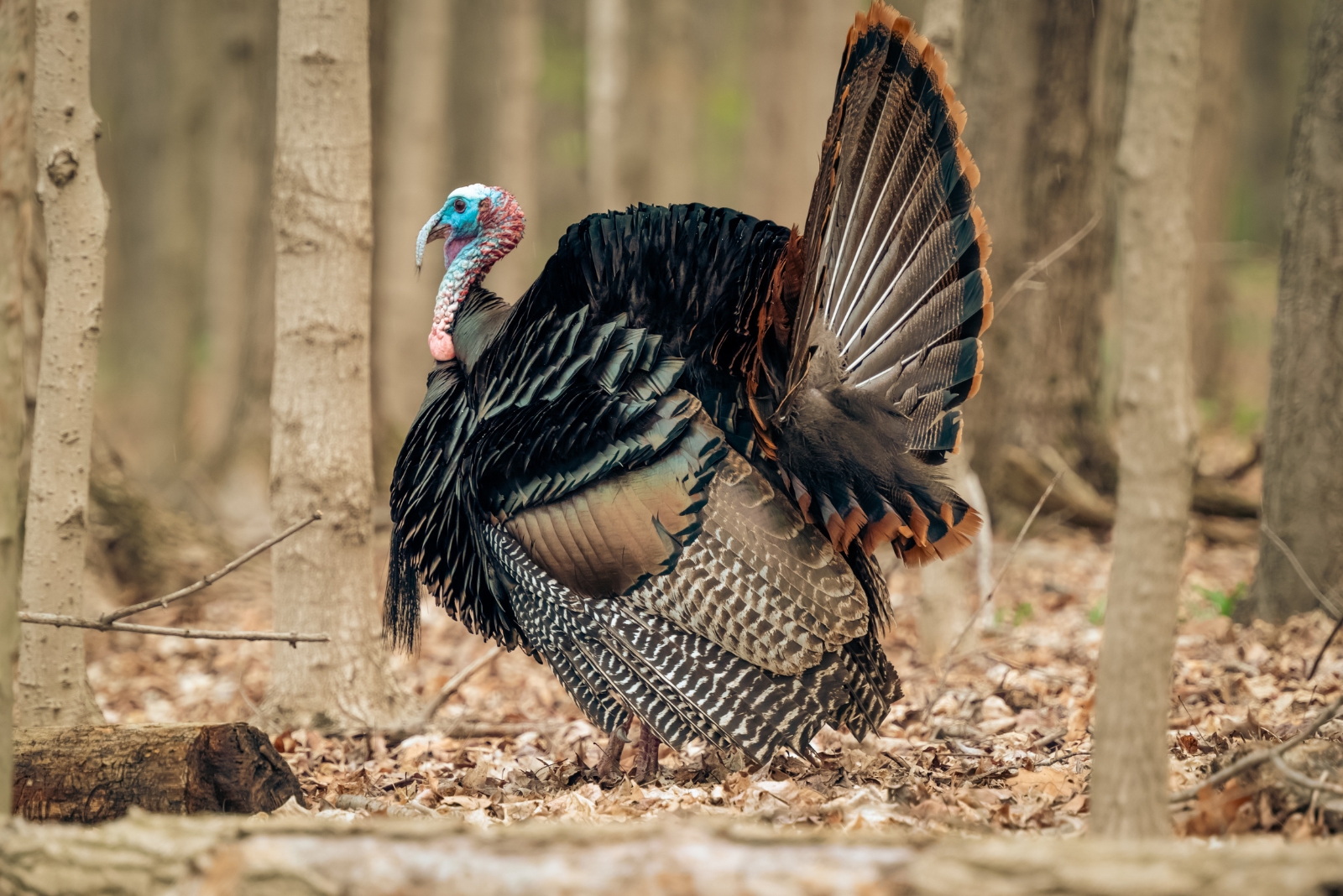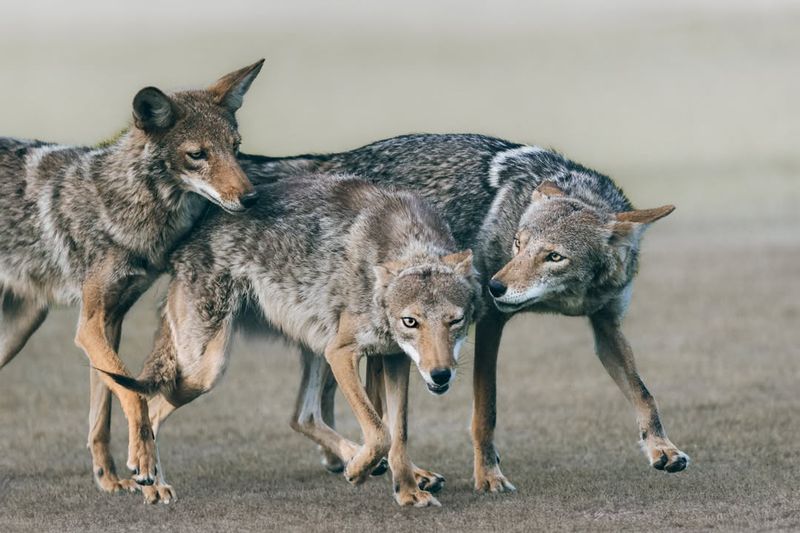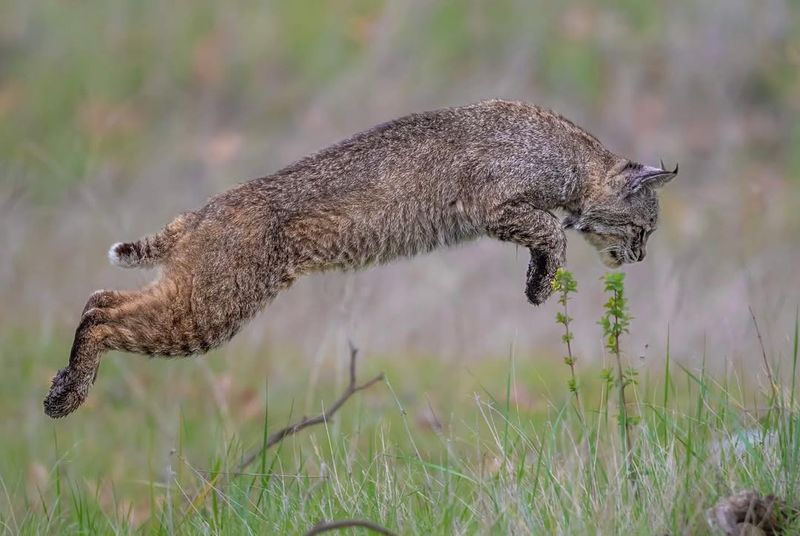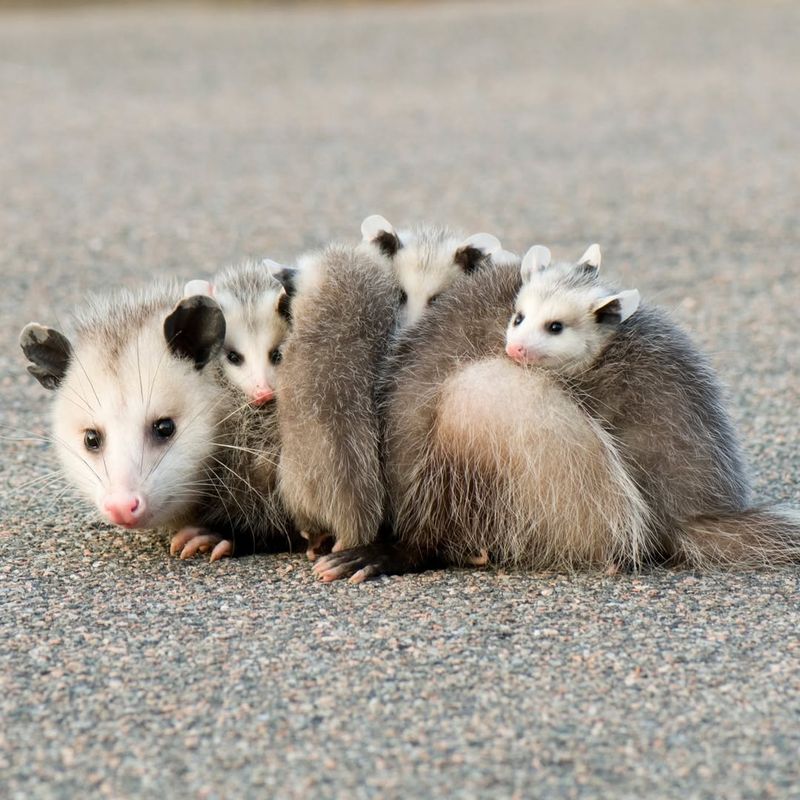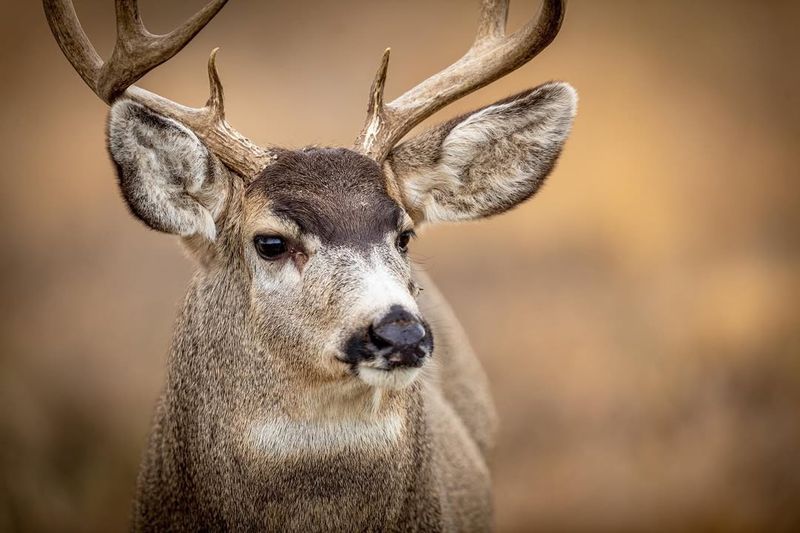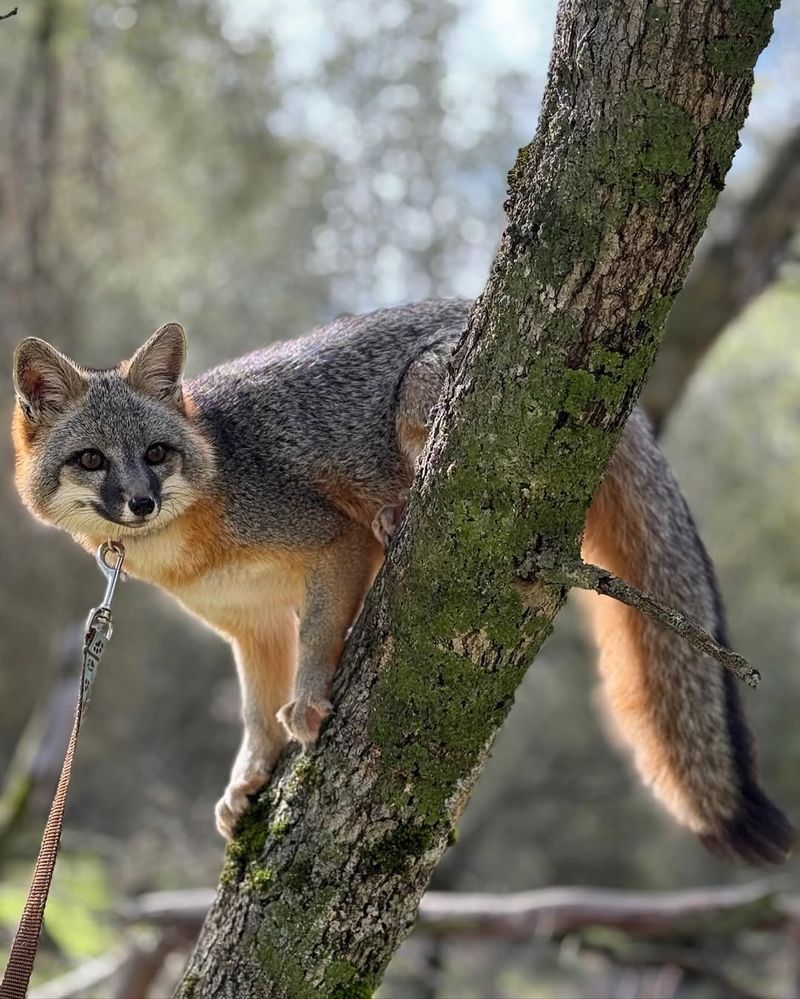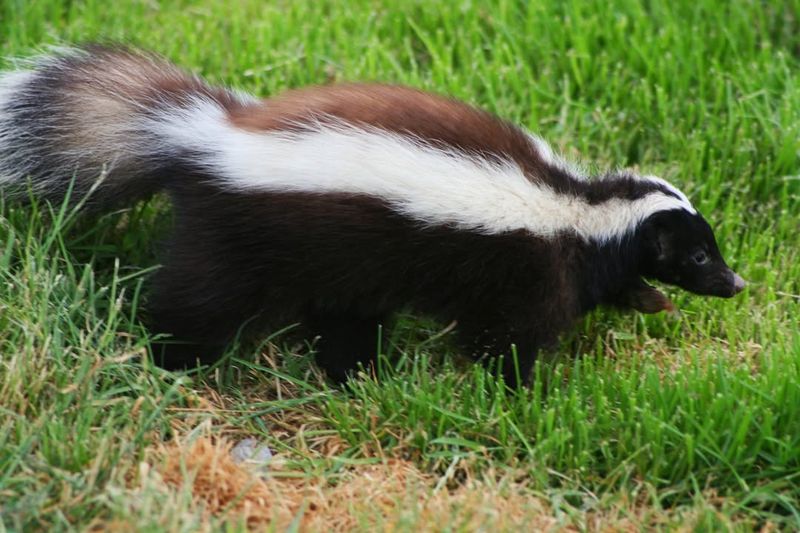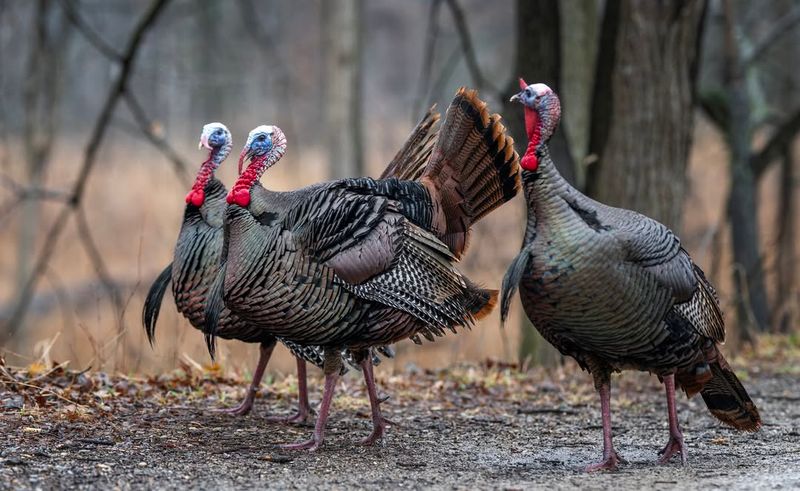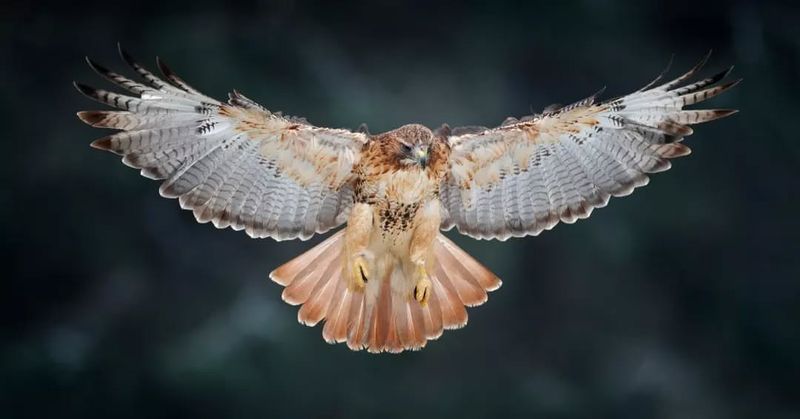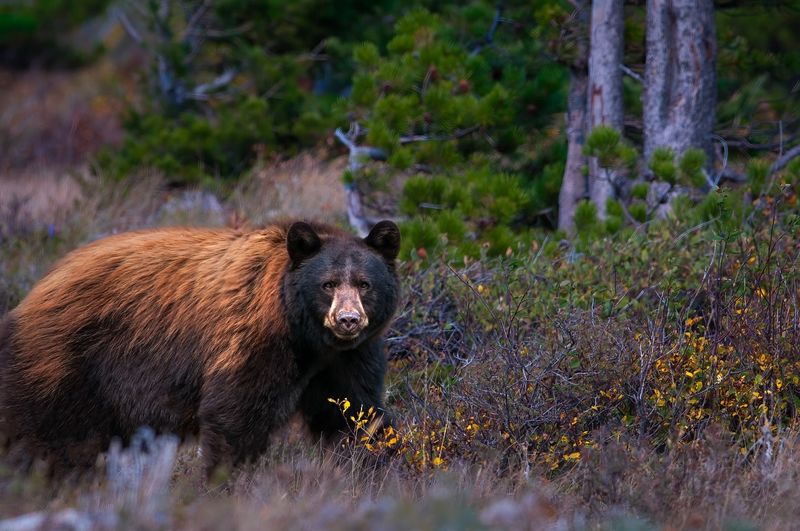California neighborhoods can feel like mini wildlife documentaries if you know where to look. Between the fruit trees, sun-warmed roofs, and quiet morning sidewalks, all kinds of animals slip through our everyday spaces.
Some are adorable, some are troublemakers, and some are just trying to mind their own business — right outside your kitchen window.
1. Coyotes
With their pointed ears and bushy tails, coyotes have become regular visitors to California neighborhoods. They usually hunt at dawn or dusk, looking for small animals, fruit, or anything edible in trash cans.
Keep your pets inside during these hours and secure your garbage. If you spot one, make loud noises and appear large to scare it away. Never approach or feed them, as this makes them lose their natural fear of humans.
2. Raccoons
Those tiny handprints near your trash can probably belong to a raccoon. These masked bandits are incredibly smart and can open latches, unscrew jars, and remember solutions to problems for years.
They’re mostly active at night and love rummaging through garbage for meals. Secure your trash with bungee cords or heavy lids to keep them out. While they look adorable, raccoons can carry diseases like rabies, so always keep your distance and never try to pet them.
3. Bobcats
Spotting a bobcat is like winning the wildlife lottery because they’re super secretive and avoid people. Roughly twice the size of a house cat, they have spotted coats and short, stubby tails with black tips.
Bobcats hunt rabbits, squirrels, and birds, usually during twilight hours. They rarely bother humans but might check out your California yard for prey. If you see one, give it plenty of space and let it move along naturally without interference or attempts to photograph it up close.
4. Opossums
Despite their somewhat scraggly appearance, opossums are actually beneficial neighbors to have around your California property. They gobble up thousands of ticks each season, helping reduce Lyme disease risk for your family.
These marsupials play dead when threatened, which is where the phrase playing possum comes from. They’re harmless scavengers that eat insects, snails, and overripe fruit. If one wanders into your garage, just leave the door open and it will waddle out on its own time.
5. Deer
Mule deer have made themselves quite comfortable in California suburbs, treating gardens like all-you-can-eat buffets. Their large, mule-like ears help them hear predators from far away.
They especially love roses, hostas, and vegetable gardens, much to homeowners’ frustration. Fencing needs to be at least eight feet tall to keep them out effectively. Dawn and dusk are prime feeding times, so that’s when you’ll most likely catch them munching on your prized plants without a care in the world.
6. Gray Foxes
Did you know gray foxes can actually climb trees? They’re the only canine species in North America with this amazing ability, using their semi-retractable claws to scale trunks when escaping danger.
Smaller and shyer than coyotes, these foxes have salt-and-pepper gray fur with rusty patches. They hunt mice, rabbits, and insects while also enjoying berries and fruits. You might hear their strange barking sounds in your California yard at night, which sound almost like a screaming cat mixed with a dog’s bark.
7. Skunks
Everyone recognizes a skunk’s warning signs: the raised tail and stamping feet that mean back off immediately. Their infamous spray can reach up to 10 feet and the smell lingers for weeks.
Skunks dig small holes in California lawns searching for grubs and insects, which frustrates homeowners but actually helps control pests. They’re generally peaceful animals that only spray when truly threatened. Remove food sources like pet food or fallen fruit, and they’ll usually move along to someone else’s property without incident.
8. Wild Turkeys
Flocks of wild turkeys strutting down suburban streets have become surprisingly common sights throughout California. Males, called toms, puff up their feathers and fan their tails during spring mating season to impress females.
They can be quite bold, sometimes blocking driveways or chasing people they perceive as threats to their territory. Despite their size, turkeys can fly short distances and roost in trees overnight. Don’t feed them or they’ll keep coming back, and aggressive birds may need to be relocated by wildlife officials.
9. Mountain Lions
Mountain lion sightings in California suburbs are rare but definitely possible, especially in areas near wildlands and hiking trails. These powerful predators usually avoid humans and hunt deer as their primary food source.
If you encounter one, never run away because that triggers their chase instinct. Instead, face the animal, make yourself look bigger, speak firmly, and back away slowly. Keep small children and pets close when hiking, and walk in groups during dawn and dusk when mountain lions are most active hunters.
10. Hawks
Red-tailed hawks circle overhead in California suburbs, scanning for mice, gophers, and other small prey with their incredible eyesight. Their distinctive rusty-red tail feathers are easy to spot when they soar.
Sometimes they’ll perch on fence posts or power lines, surveying your yard like personal security guards. Small pets like chihuahuas or rabbits could be at risk, so supervise them outdoors. Hawks are protected by federal law, so you cannot harm or disturb them, but their presence actually helps control rodent populations naturally around your home.
11. Black Bears
Black bears wandering through suburbs might sound terrifying, but they’re usually just looking for easy meals like trash, bird feeders, or pet food left outside. California’s bear population has grown, pushing them closer to human areas.
They have an incredible sense of smell and can detect food from miles away. Store garbage in bear-proof containers and never leave food in your car overnight. If you see a bear, make noise, wave your arms, and back away slowly while facing it. Most encounters end peacefully when bears simply move along.

